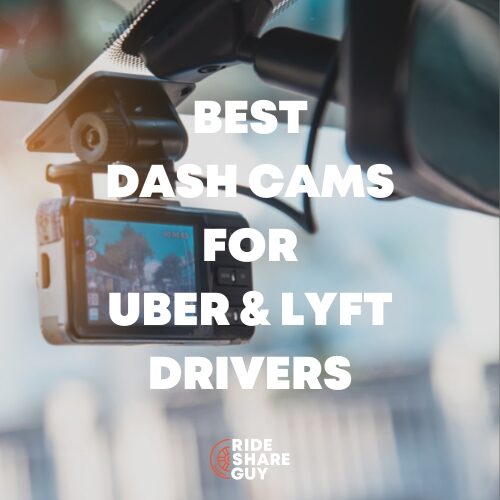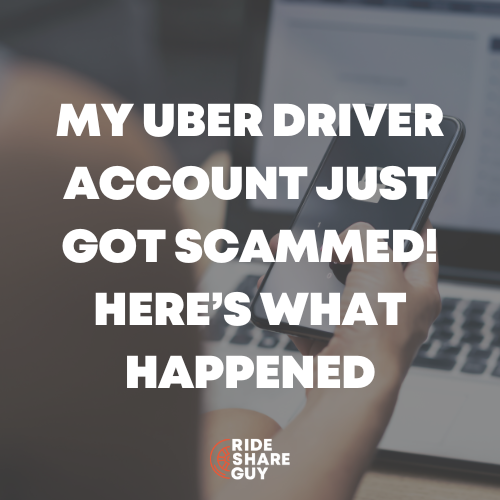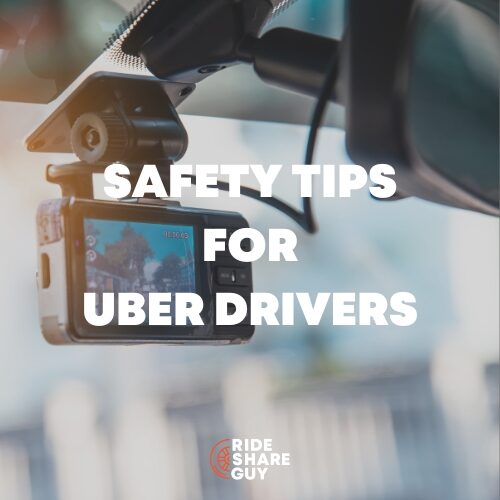Here at The Rideshare Guy, we take listening to our audience seriously. It’s why we regularly host YouTube Live events and still respond personally to the hundreds of emails we get weekly. We understand drivers are struggling right now: stay on unemployment, get out and drive, try something new entirely?
Lyft is listening to drivers, too. Below, we’ll cover how drivers are earning on the platform now, how Lyft is prioritizing driver safety during COVID-19, and how they’re addressing the key issues drivers face on the road today.
This post is sponsored by Lyft and as always, all opinions are our own. We’re proud to partner with Lyft on the initiatives outlined below.
We spoke with Lyft and did some extra research to see how drivers are earning today and what Lyft is doing during these times to help not only drivers on their platform, but the communities they are in.
One thing that stood out the most was the fact that Lyft wants to hear from drivers so they can improve what they are doing and make sure they are providing what’s needed.
It’s hard to communicate thoroughly with such a large driver base, so some of what Lyft has been doing and is working towards has been lost in the shuffle. So I’ll explain how Lyft’s special programs and how you can actually get your voice heard!
Driver Earnings During COVID
Lyft realizes that ridership has been down because of shelter-in-place orders and other factors during the COVID-19 pandemic. As a result, drivers’ earnings took a big dip at the beginning of COVID, but Lyft says drivers’ average hourly earnings have rebounded to pre-COVID levels.
In fact, in many cities, drivers are even doing better than before COVID because despite reduced demand, there are even less drivers (supply). The drivers we’ve talked with are experiencing these high earnings, and Lyft even shared what most drivers have been making right now in hourly earnings in a few major cities[1]. Per- hour online and before expenses, most drivers made at least:
- $28.79/hr Detroit
- $31.30/hr Baltimore
- $28.42/hr Columbus
Lyft explained that drivers are busier than before, and spend less time waiting to get a ride, and more time earning in a ride. Those of us who have been driving during COVID have also experienced more bonuses lately, as Lyft seeks to bring more drivers on the road.
LyftUp Provides Drivers Ways to Earn Money While Doing Good for the Community
Similar to their coronavirus safety plan response with the essential delivery services, Lyft also has an initiative called LyftUp. LyftUp was born out of disaster work such as Hurricane Harvey and disaster response.
LyftUp makes sure that everyone has access to affordable and reliable transportation to get where they need to go. This includes rides to the polls, getting people to work and helping families access healthy foods.
As part of LyftUp, you may also drive unemployed people to job interviews to help them get back on their feet. You may drive people to their new job for the first few weeks until they get their first paychecks. In this way, as a driver, you are helping rebuild the economy and getting people back to work.
You’d also possibly be driving people to their voter location. With the pandemic and more people voting by mail, it’s possible that there will be fewer voter locations. To vote, people may have to venture further out. For those people, Lyft will be there.
LyftUp also has teamed up with local partners and RAINN to help get victims of domestic violence to a place of safety and so they can receive vital help and resources.
The rides for the passengers may be free, but the driver receives their full pay for the ride as if the passenger had been paying for it all along.
Additional Earnings Opportunity: Essential Deliveries Program
The Essential Deliveries program allows Lyft drivers to have the opportunity to make money while helping people in need. It’s work that drivers can also feel proud to do.
Years later, when your kids or grandkids ask what you did during the pandemic, you can say that you helped those in need. You helped children and the elderly by delivering food to low-income communities and to seniors and families who rely on free and reduced lunches.
These deliveries on the Lyft platform are different. They are not direct to consumers, meaning you don’t deliver the meal to the person who requests it on the app.
Instead, it’s to a person identified by organizations such as Meals on Wheels. You pick up the food from the non-profit or government agency or restaurant partner and deliver to the provided location—and there is no contact with the recipient.
Customers engage with non-profits or government food delivery to get food to those in need. Drivers do have to opt into this; you’re not automatically enrolled in these services. It’s currently being rolled out to different markets, so keep an eye out for it in yours.
Another thing to keep in mind is that many believe that delivering food is safer at this time, as far as COVID-19 is concerned. It’s currently set up to be contactless, making social distancing with the recipient possible. Keep in mind there is now separate mode for essential delivery rides at this time, so you can’t strictly do delivery.
Lyft’s Communication Support
Part of Lyft’s COVID response for drivers is listening. Lyft wants to listen to their drivers so they can improve the support they can give overall.
One way they are doing this is having a community engagement team in 23 of their top markets.
These community engagement teams have a mission to engage deeply with the local community to see what their unique needs are. Their job is to listen to driver insights and preferences and then take action based on that feedback.
Examples of actions Lyft has taken so far:
- Hosted calls with drivers
- Sent weekly emails to drivers to help with unemployment questions
- Answered questions about driving during the COVID-19 pandemic
- Provided access to COVID-19 testing through a free trial with One Medical’s Essential Worker program
So, as a driver, how can you get your feedback respected? I know it often feels like you’re screaming into the void if something isn’t going well. Or you decide to stay silent because you don’t feel like it will make a difference by speaking up.
Here are several ways you can have your voice heard by Lyft:
- Customer Experience team — send in your questions or ideas to the customer experience team. It’s not just made for riders on the Lyft platform, but for drivers too. They will take different driver responses and summarize them weekly to send to the Lyft leadership team.
- Take Lyft surveys — Every week Lyft sends out surveys to try to understand what drivers want. If you’re ever sent one of these surveys, take it and be honest. If you check that everything is fine, they won’t know what concerns or changes you want.
- Driver Advisory Council — there are driver advisory councils in 40+ markets, made up of local drivers to represent local driver interest. You can actively be this person, or talk to this person via this form.
Here are real-life examples of driver feedback where Lyft actually implemented positive changes:
- Lyft explaining how to apply to unemployment help
- Lyft partnered with Kabbage to help drivers apply for federal relief through the Paycheck Protection Program
- Lyft’s enhanced safety commitment
- Partnering with One Medical to give drivers access to a free 30-day trial membership to get on-demand virtual care at no cost and access to COVID-19 testing
- Lyft Essential Deliveries (keep reading for more details on how to make money with Lyft food deliveries)
You also may not have heard that Lyft had drivers’ backs in the implementation of the CARES Act. They lobbied hard for getting Pandemic Unemployment Assistance for independent contractors so drivers would be taken care of.
Lobbying for this was a key part of Lyft’s COVID response for drivers, and it’s one thing drivers we’ve spoken to really rely on – even if they don’t know how much impact Lyft had behind the scenes.
Lyft’s Safety Support for Drivers
As far as COVID-19 is concerned, Lyft is committed to driver and passenger safety. Before requesting a ride, drivers and passengers must say that they are COVID-19 symptom-free.
Masks are also now mandatory for riders and drivers. A driver can cancel if a passenger is not complying, without fear of punishment.
From early on when COVID-19 was announced in the U.S., Lyft halted their shared rides and will continue that trend for a while for safety reasons. They are continually updating their COVID-19 safety plan and coming up with more education tools for their drivers to stay safe and healthy during the pandemic. Learn more with Lyft’s COVID-19 safety tutorial.
These are all on top of the existing safety features built into the Lyft app, such as “access to 24/7 support, roadside assistance, emergency services and real-time maps you can share with family and friends.” If you’re not familiar with all of these safety features, take Lyft’s in-app safety tutorial.
My Thoughts
Lyft is doing a lot for communities in need and allowing drivers to be part of that process. Drivers are getting paid for every ride and delivery, even if they are subsidized on the part of the passenger or customer.
Lyft seems to be doing what they can to open themselves up to drivers’ ideas and suggestions. Obviously, as a business, they can’t implement everything, so we’re all looking forward to seeing more transparency from Lyft as to why they don’t make changes that we as drivers think are ideal.
Is there more Lyft can do to have your back? Lyft says they’re listening and reacting. Reach out to Lyft in the ways outlined above. See for yourself how they respond. Let me know how well they keep their word!
What do you think about how Lyft is doing? Do you feel like you’re being heard as a driver?
- Harry @ RSG
[1] Based on July 2020 data. Take home earnings calculated before taxes, insurance, depreciation, and other costs associated with being a rideshare driver.




